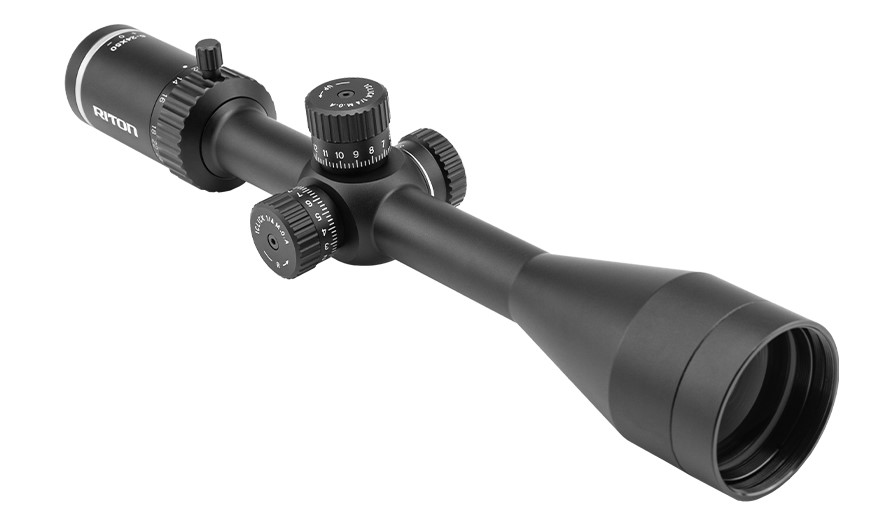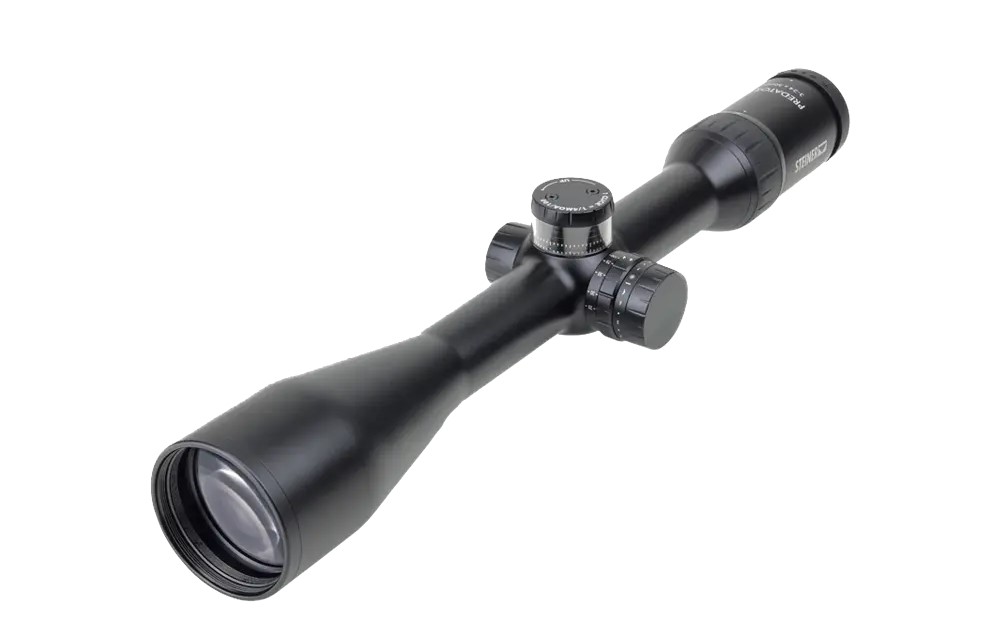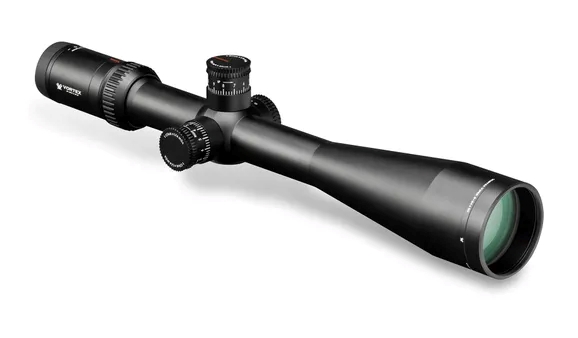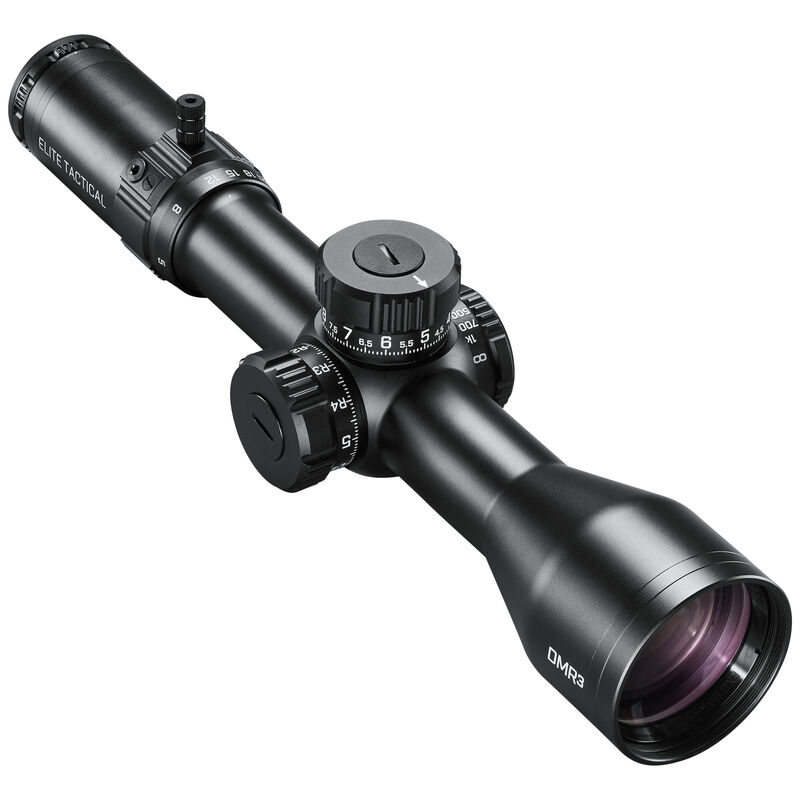Understanding MOA and MILS: A Comprehensive Guide to Precision Shooting Measurements
Posted by Mandu Moses on Nov 1st 2024
You cannot discount accuracy in precision shooting. Every twitch of the finger or whisper of wind can make a difference between hitting a target and missing. Although several factors may affect your precision and accuracy, MOA and MILS are the two most important.
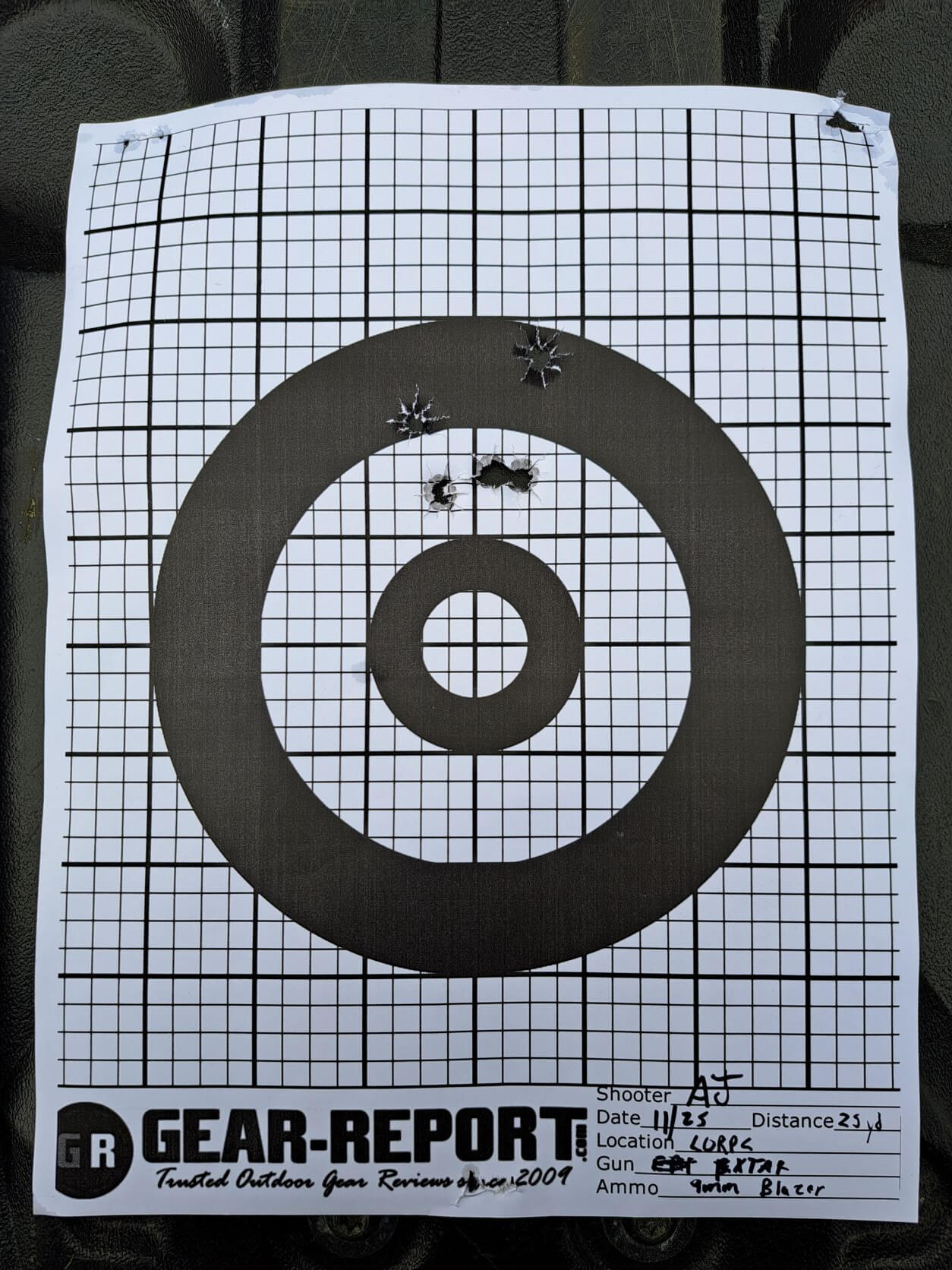
Minute of Angle (MOA) and Milliradian (MILS) help with aiming, but what are they? Let’s explore the aiming systems and see how these two work.
MOA Explained: Your Guide to Measuring Accuracy
MOA is a common term with firearms especially concerning long-range shooting. However, what exactly is it, and why does it matter?
What is MOA?
MOA is a tiny unit used to measure shooting angles. In firearms, MOA helps us understand how accurately your gun shoots.
When you aim at a target, your bullet travels in a curved path due to gravity. MOA helps you tell how much that bullet will deviate from your perfect aiming point at a specific distance. The smaller the MOA, the tighter the grouping of your shots, and the higher your precision.
Why is MOA Important?
Assuming you aim at a target 500 yards away. If your rifle has a 1 MOA accuracy, your shots will land within a circle roughly the size of a golf ball (about 5.24 inches) at that distance. When you use a rifle of 2 MOA, the circle will automatically increase to the size of a tennis ball (about 10.47 inches). That’s where the difference lies. For long-range shooting, where targets are specks on the horizon, every inch matters, and MOA becomes your key to hitting the target accurately.
Determining MOA: How Precise is Your Gun?

When it comes to precision shooting, understanding your firearm's Minute of Angle (MOA) is crucial. MOA is a unit of angular measurement used to describe the accuracy and precision of a firearm. It represents 1/60th of a degree and translates to approximately 1.047 inches at 100 yards. Knowing your gun's MOA allows you to predict the size of the shot group at various distances and gauge the firearm's capability for consistent accuracy.
You can figure out your firearm's MOA in two ways:
-
Shooting Method
Preparation:
- Ensure the firearm is properly sighted in and that you are using consistent ammunition.
- Set up a target at a known distance, typically 100 yards.
Shooting:
Fire a series of shots (usually 3 to 5) at the target, ensuring consistent aiming and trigger control.
Measurement:
- Measure the spread of the shot group by determining the distance between the centers of the two furthest bullet holes.
- Convert this measurement to inches.
Calculation:
Divide the spread in inches by the distance in yards (if using 100 yards, simply use the spread in inches). This gives the MOA at that distance.
Example: If the spread is 1 inch at 100 yards, the firearm has a 1 MOA accuracy.
-
Mathematical Method
Data Collection
- Obtain a series of shot groups at a known distance, typically 100 yards.
- Measure each group’s spread in inches.
Averaging
Average the spreads of several groups to get a more accurate measure of the firearm's precision.
Calculation
Similar to the shooting method, divide the average spread in inches by the distance in yards to determine the MOA.
Example: If the average spread is 1.5 inches at 100 yards, the firearm has a 1.5 MOA accuracy.
What is MIL?

MIL, short for Milliradian, is another angular measurement unit used in precision shooting and optics. A milliradian is equal to 1/1000th of a radian. In practical terms, one MIL at 100 meters equals 10 centimeters or approximately 3.6 inches at 100 yards. MILs are often used in military and tactical scopes for range estimation and adjusting shots.
Why is MIL Important?
Precision and Consistency
MIL provides a standard unit for measuring angles, which is crucial for making precise adjustments to the aim point, especially at long ranges. It allows shooters to make consistent, repeatable adjustments, crucial for both target shooting and tactical operations.
Range Estimation
MILs are used in scopes with MIL-Dot reticles to estimate the range to a target. By measuring the target in MILs and knowing its size, shooters can calculate the distance accurately. This is essential for long-range shooting, where accurate range estimation can significantly impact the shot placement.
Adjusting for Environmental Factors
Shooters use MIL adjustments to compensate for wind, elevation changes, and other environmental factors. With MIL-based scopes, shooters can make precise adjustments based on known MIL values, allowing for more accurate shots in varying conditions.
Universal Standard
MILs are a universal standard in military and tactical shooting, making it easier for shooters worldwide to communicate and standardize their adjustments. This uniformity is beneficial for training, operations, and interoperability among different units and countries.
Testing:
Head to the shooting range and fire a group of shots at a known distance. Measure the spread of your bullet holes, and with some simple calculations, you can estimate your MOA.
Specs
Many manufacturers list their rifles' MOA accuracy specifications. For instance, a rifle advertised as "1 MOA guaranteed" means you can expect 1-inch groups at 100 yards, 2-inch groups at 200 yards, etc.
Note that MOA is an angular measurement, not a linear one. It scales with distance, meaning 1 MOA at 100 yards is different from 1 MOA at 500 yards.
There are other angular measurement systems like MILS, but MOA is more common in the US, while MILS dominates Europe.
Rifle scope samples;
Riton 1 Conquer 6-24x50 rifle scope
|
|
Gunmag Warehouse: $249.99 |
The Riton 1 Conquer 6-24x50 is praised for its entry-level appeal, particularly for those new to long-range shooting. The scope is described as a high-performance optic designed for precision and reliability, with a budget-friendly price and an appealing feature set.
Features:
- Magnification: 6-24x, suitable for various shooting distances.
- Reticle: Second Focal Plane (SFP) reticle
- Click Value at 100 Yards: 1/4 MOA for precise adjustments.
- Adjustment Range: Approximately 67 MOA of internal elevation adjustment.
- Riton’s R3 Zero Stop Turrets
Steiner Predator 8 3-24x50mm Scope
|
|
Sportsman’s Guide: $2,199.99 |
Features:
- First focal plane reticle stays true to size at any zoom.
- Razor-sharp optics with clarity and color fidelity
- A range of reticles and magnifications
- Max elevation and windage adjustment: 40 MOA
Vortex Optics Viper HS-T
|
|
Sportsman’s Guide: $699.00 |
The Vortex Optics Viper HS-T riflescope is ideal for a wide range of shooting applications.
Features:
- 4x zoom range
- 30mm, one-piece aluminum tube
- Tactical turrets
- Hashmark-based VMR-1 reticle.
- Increased eye relief
- Adjustment range: 21 MOA
Nightforce Optics SHV 5-20x56
|
|
Optics Planet: $1,290.00 |
Features:
- 4-14x zoom range
- Tactical turrets
- Illuminated reticle
- One-piece aluminum tube built to withstand heavy recoil
- Elavation adjustment: 80 MOA
Bushnell Elite Tactical G2DMR
|
|
Palmetto State Armory: $1,299.99 |
Features:
- 3.5-21x zoom range
- Tactical turrets
- Illuminated reticle
- One-piece aluminum tube built to withstand heavy recoil
- Adjustment range: 34 MIL
Nikon Black FX 1000
|
|
Features:
- 4-16x MOA zoom range
- Tactical turrets
- Illuminated reticle
- One-piece aluminum tube built to withstand heavy recoil
What is Sub-MOA in Sniper Rifles?
Have you ever seen a sniper hit a target the size of a grapefruit from hundreds of yards away? That’s the power of precision and it is a result of crucial factors like Sub-MOA.
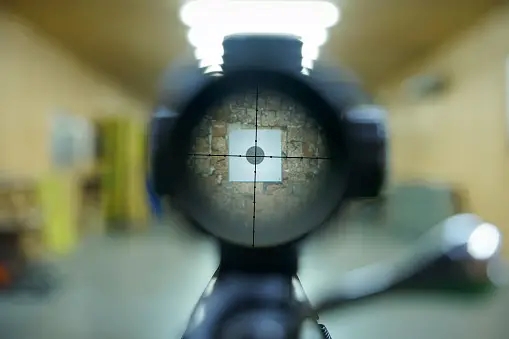
Credit: Dmitri Toms
MOA, as discussed earlier, is a unit that measures how wide a group of shots will land within that circle at a certain distance.
Sub-MOA takes this a step further meaning the group of shots lands closer to the target compared to a single MOA. It is like hitting a raisin instead of the whole grapefruit. In simple terms, a Sub-MOA rifle can consistently land its shots within a very tight grouping even at long distances.
Precision Requirements
How precisely does a rifle need to be to earn the "Sub-MOA" badge of honor? Let's break it down:
At 100 Yards: The bullet group needs to be less than 1 inch (2.54 cm) in diameter; about the size of a small coin!
At 300 Yards: The group needs to be less than 3 inches (7.62 cm) across, about the size of a tennis ball.
Further Distances: At greater ranges, the MOA requirement remains the same, but the actual size of the allowed group naturally increases due to the increased distance.
These are just general guidelines meaning different rifles and ammunition combinations can achieve varying levels of Sub-MOA accuracy.
Factors Affecting Sub-MOA Performance
Achieving Sub-MOA is a delicate balance between factors such as;
Barrel Quality: A top-notch barrel with a smooth bore and precise rifling is crucial for a consistent bullet flight.
Ammunition: Using high-quality ammunition matched to the rifle's specific characteristics ensures optimal performance and accuracy.
Rifle Build: A well-constructed rifle with a solid action and a sturdy stock minimizes vibrations and provides a stable platform for firing.
Shooter Skill: The best rifle needs a skilled operator. Proper shooting techniques, breath control, and trigger discipline are all crucial for achieving Sub-MOA accuracy.
Sub-MOA is a result of meticulous attention to detail, high-quality components, and a skilled hand behind the trigger.
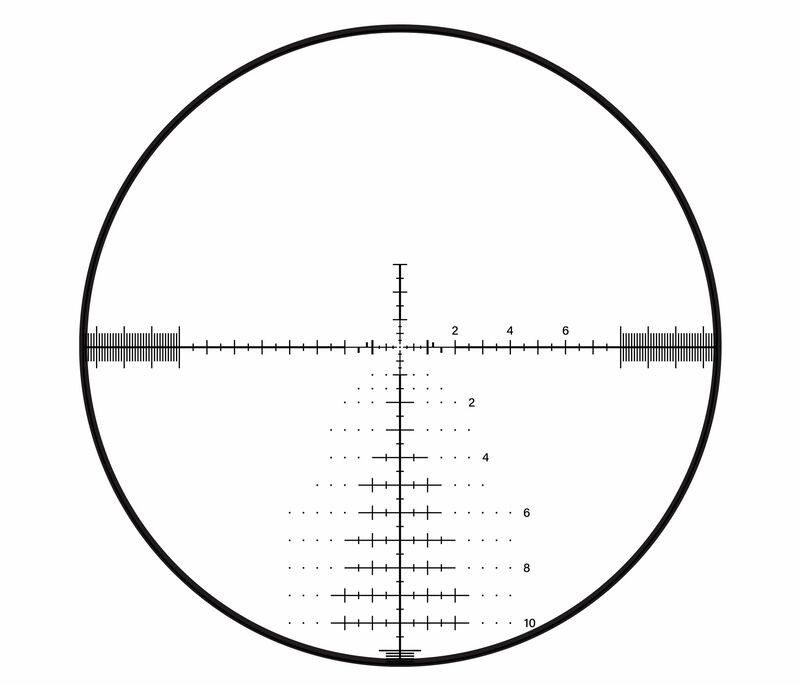
How to Determine a Firearm's MOA
MOA (minute of angle) and mils are two common ways to measure firearm accuracy. However, how do you find out these factors in your gun? The following is a step-by-step guide to determine your firearm's MOA:
Equipment Needed
Rifle and Scope: Choose a firearm you're comfortable with and scope with MOA adjustments. Most scopes have markings with numbers (MOA clicks) on the adjustment knobs.
Target: Get a paper target with clearly marked circles with one-inch increments.
Stable Shooting Position: A bench rest or sandbags will help ensure consistent aim.
Ammunition: Use high-quality ammo that matches your firearm's specifications.
Step-by-Step Process
- Zero your Scope: Make sure your point of aim matches your point of impact at a set distance, usually 100 yards. You can refer to your scope's manual for specific instructions.
- Shoot a Group: Fire 3-5 shots aiming at the center of the target.
- Measure the Group Size: Use a ruler or calipers to measure the center-to-center distance between the two furthest bullet holes. Don't include outliers; focus on the tightest cluster of shots.
- Convert to MOA: Divide the group size (in inches) by the distance (in yards) and multiply by 100/1.047.
MOA = (group size in inches) / (distance in yards) * 100 / 1.047
Common Mistakes
- Inconsistent Shooting: Make sure you're using proper shooting techniques like breath control and trigger pull. Any wobble or flinch can throw off your aim.
- Poor Target Quality: Damaged or blurry targets can make it difficult to measure group size accurately.
- Not Aiming At The Center: If you aim slightly off-center, your group size will be larger and your MOA calculation will be inaccurate.
- Ignoring Outliers: A stray bullet can mess up your calculations. Focus on the tightest cluster of shots.
Tips
- Start with smaller MOA adjustments (1-2 clicks) and gradually increase them to avoid large jumps in your point of impact.
- Shoot multiple groups and average the MOA results for a more precise measurement.
- Don't get discouraged by high MOA initially. Practice will improve your accuracy and tighten your groups.
How to Calculate MOA
A large part of a sharpshooter's success is attributed to MOA, a measure of accuracy.
Imagine a circle. Divide it into 360 degrees and slice each degree into 60 tiny pieces called minutes; one MOA. So, at 100 yards, 1 MOA equals roughly 1 inch on your target. It is like a built-in ruler on your scope, helping you measure how far off your shots are landing.
A minute of angle, usually used as a measure of group size, target size or shot dispersion, spans 1.047 inch at 100 yards. True MOA at any distance is calculated by:
Multiplying the ratio of group size in inches and the distance in yards by 100 and dividing by 1.047.
MOA = (group size in inches) / (distance in yards) * 100 / 1.047
Additionally, most shooters use another MOA measure dubbed The Shooter’s MOA (SMOA). Instead of using the value of 1.047 inches at 100 yards, the value is rounded down to 1”.
Therefore, instead of quoting the true value of 1.047 in calculations, we quote 1 inch at 100 yards. This is however only practical at short distances. If you consider distances of 1000+ the SMOA becomes wildly inaccurate.
Shooters often think of MOA in terms of inches. For instance, if 1 minute equates to 1 inch at 100 yards, then 2 MOA at 100 yards = 2 inches, and 1 MOA at 400 yards = 4 inches, etc.
Shooter’s MOA is calculated as follows:
SMOA = (group size in inches) / (distance in yards) * 100 / 1
This calculation remains pretty easy if you maintain 100-yard increments in the distance. Besides, MOA scopes are often adjustable by 1/4 (0.25) MOA increments (approx. 1/4 inch at 100 yards).
Example:
Assume you're aiming at a bullseye 200 yards away. Your first shot lands an inch to the right. Remember, 1 MOA at 200 yards is about 2 inches (double the 100-yard size). To adjust for that inch miss, you need to move your aim by ½ MOA (half the size) to the left. Knowing MOA helps you make tiny, precise adjustments for laser-like accuracy such as in this scenario.
You might be familiar with adjustments:
- MOA adjustment = adjustment needed (inches) / inches per MOA at that distance
- Adjustment in clicks on scope = clicks per 1 MOA on scope x MOA adjustment
How to Calculate MIL
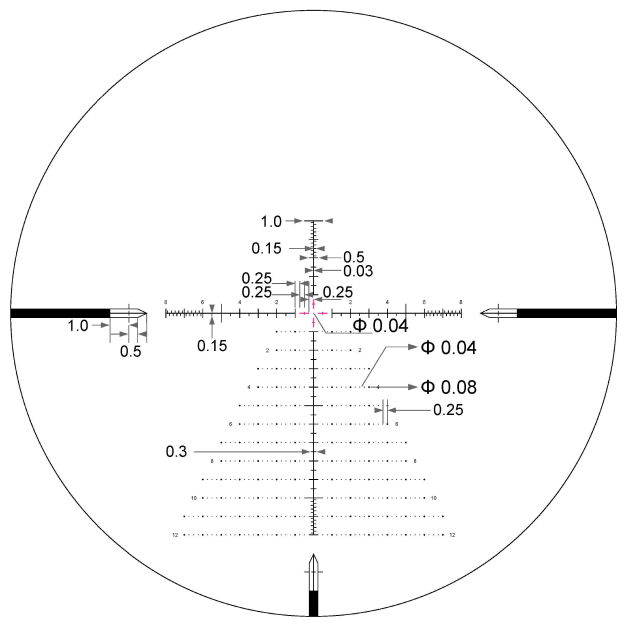
Milliradian (MIL) is a unit of angular measurement. To calculate MIL, you need to know the size of the target or object in linear units (such as centimeters or inches) and the distance to the target or object in the same units. Then, you can use one of these formulas:
Using cm and m
MIL = Size (cm) / Distance (m) * 10
Using inches and yards
MIL = Size (inches) / Distance (yards) * 27.77
Case examples:
Suppose you see a target that is 50 cm tall and it appears to be 2.5 MILs in your scope. You can use the range estimation formula to find the distance to the target:
Range (m) = 50 / 2.5 * 10 = 200
The target is 200 meters away from you.
Also, say that you know the distance to the target is 300 meters and it appears to be 1.5 MILs in your scope. You can use the target size estimation formula to find the height of the target:
Target size (cm) = (300 * 1.5) / 10 = 45
The target is 45 cm tall.
Converting MOA to MILs and vice versa is possible. here’s how;
MILs to MOA = Multiply by3.5 (The precise math is Mils x 3.438 = MOA)
MOA to MILs = Divide by 3.5 (The precise math is MOA / 3.438 = MILs)
The Benefits of MOA Calculations
Mastering MOA calculations gives you the much-needed data at the range. You can:
Make Fine-Tuned Adjustments: Knowing how much to move your aim for each MOA difference ensures you hit your target, not the surrounding pape hence no more guessing for precision.
Adjust For Distance: Bullets drop as they travel, so knowing how MOA changes with distance (it gets bigger as the target gets further) lets you compensate and keep those shots on point.
Compare scopes and rifles: Different scopes have different MOA "scales," so understanding calculations helps you choose the right equipment for your needs.
Understanding Subtensions and Turrets in Scopes
Subtension refers to the angular size that a specific part of the reticle covers at a particular distance in reference to riflescopes. This measurement is crucial for estimating range, compensating for wind drift, and holding off on targets. Subtensions are angular units just like MILs and MOA.
Matching Reticles and Turrets
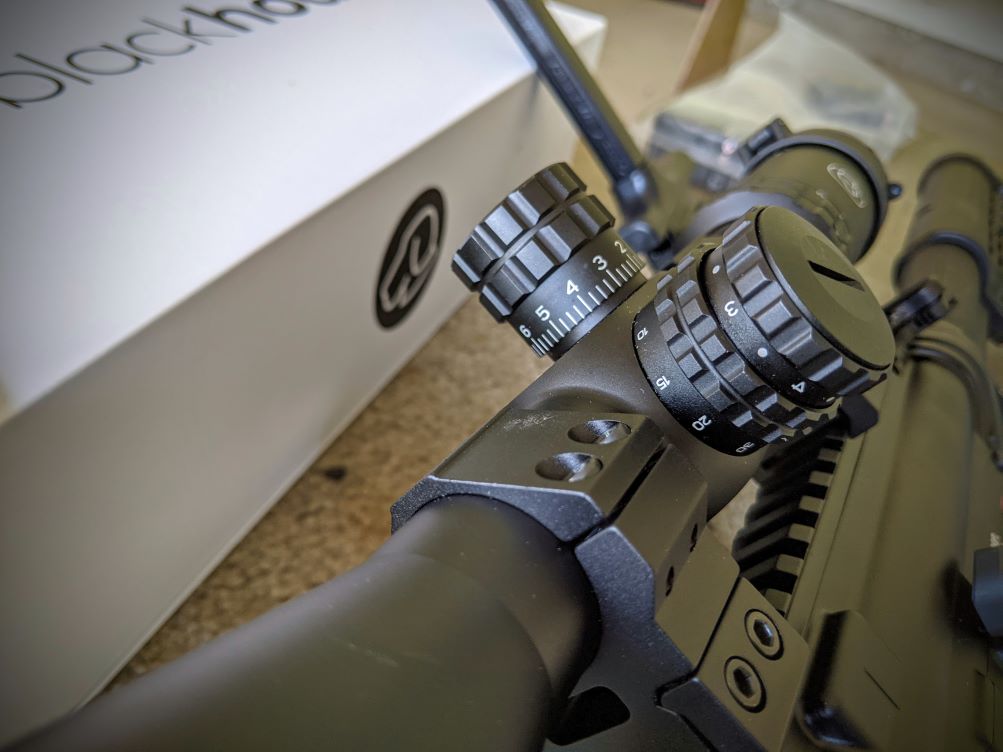
It's essential to ensure your reticle and turrets use the same measurement system. Mixing systems, such as using a mil-dot reticle (measures in MILs) with a scope that has 1/4-MOA click adjustments, can lead to unnecessary complications. In such scenarios, you'd need to convert measurements you see through the scope (in MILs) to the clicks on the scope's turrets (in MOA), requiring calculations under pressure when quick adjustments are critical.
Focal Plane Matters
Further adding to the complexity, second focal plane (SFP) scopes have reticles whose subtensions change with magnification. This means the relationship between the reticle and the target isn't constant, unlike first focal plane (FFP) scopes where the reticle maintains the same size relative to the target regardless of magnification. SFP reticles are usually calibrated to work at the scope's maximum magnification.
Avoiding Confusion
To simplify your experience and ensure accurate adjustments, it's highly recommended to match your reticle's measurement system to your scope's turrets. Additionally, opting for an FFP reticle eliminates the concern of changing subtensions with magnification.
The Bottom Line
MOA and MILS might seem like complicated codes used by seasoned marksmen, but they're simply different ways to talk about aiming super precisely. They’re like tiny rulers on your scope, helping you adjust your shots for wind, distance, and that tricky uphill target. Understanding these "rulers" makes you a much sharper shooter, no matter what you're aiming at. Practice makes perfect, and with a dash of MOA or MIL magic, you'll be hitting targets like a pro in no time.

